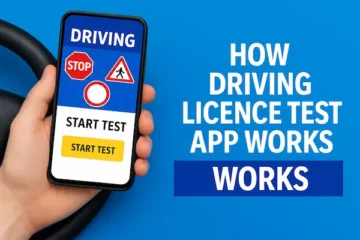How to download reading apps for kids to learn to read
Discover how to download the best reading apps for kids that make learning to read fun and engaging.
How to Download Reading Apps for Kids to Learn to Read
Reading apps for kids are an excellent way to introduce young learners to the world of literacy.
These apps provide interactive and engaging content that teaches essential reading skills, including phonics, sight words, and comprehension.
In this guide, we’ll walk you through the steps to download these apps and start your child’s reading journey.
Downloading these apps can provide a wealth of resources at your child’s fingertips, giving them the tools they need to practice reading at their own pace.
Many apps also offer a blend of visual and auditory learning, which helps in keeping children engaged and ensures they retain the skills they are learning.
Let’s take a closer look at how to download these apps and what features make them ideal for children who are learning to read.

Step 1 – Choose the App Store
First, open your device’s app store. If you are using an Android device, go to the Google Play Store.
For Apple users, access the Apple App Store.
These are the official platforms where you can safely download apps for your device.
Ensure that your device has a stable internet connection before proceeding to avoid any interruptions during the download process.
Both app stores offer a wide variety of reading apps for kids, so it’s important to be prepared to spend a few minutes reviewing the options available. Additionally, make sure your device has enough storage space for the app to run smoothly.
Step 2 – Search for “Reading Apps for Kids”
In the app store’s search bar, type “reading apps for kids” to bring up a list of options.
The search results will typically show the most popular and top-rated apps that are specifically designed to help children with their reading skills.
As you scroll through the search results, you’ll likely see a mix of free and paid apps.
It’s important to review the features and user reviews for each app before deciding which one to download.
Some apps offer a free version with limited features, while others may require a subscription for full access.
Step 3 – Select the App
Once you’ve identified an app that looks promising, tap on it to view more details.
Most app listings will provide information about what the app offers, including features, age recommendations, and user reviews.
This is where you can get a sense of whether the app will be a good fit for your child.
For example, some apps may focus on phonics and letter recognition, while others might emphasize interactive stories or comprehension games.
Take time to explore the app’s screenshots and descriptions to ensure it aligns with your child’s learning style and current reading level.
Step 4 – Tap ‘Download’ or ‘Get’
After you have reviewed the app’s features, press the ‘Download’ or ‘Get’ button.
Depending on the app and your internet speed, the download process may take a few moments.
Be sure to have enough storage space on your device, especially for apps that include multimedia elements such as videos or large libraries of interactive books.
If the app offers in-app purchases or subscriptions, you may be prompted to review the payment options at this stage.
Some apps will also notify you of any privacy policies or user agreements that you must accept before proceeding with the installation.
Step 5 – Open the App and Set It Up
Once the app has been downloaded, tap to open it. Most reading apps for kids will guide you through an initial setup process.
This could involve creating a profile for your child, entering their age or grade level, and selecting learning goals.
By setting up a profile, the app can tailor its content to suit your child’s specific learning needs.
Many apps also allow parents to monitor their child’s progress through built-in tracking tools.
This is a useful feature, as it gives you insight into how your child is advancing in their reading skills and identifies areas where they might need additional support.
Summary List of How to Download Reading Apps for Kids
Here’s a quick breakdown of the steps to download reading apps for kids:
- Open your device’s app store (Google Play Store or Apple App Store).
- Search for “reading apps for kids.”
- Review the available apps and choose the one that fits your child’s needs.
- Tap ‘Download’ or ‘Get’ to install the app.
- Open the app and set up your child’s profile to personalize their learning experience.
How Do Reading Apps for Kids Work?
Reading apps for kids are designed to make learning both effective and enjoyable.
These apps use a combination of interactive elements, such as phonics games, letter tracing activities, and storybooks to engage children in learning to read.
Each app often includes step-by-step lessons that focus on essential reading skills.
Phonics-based apps teach children to recognize sounds and match them to the corresponding letters.
This is an important foundational skill that helps children decode words when reading.
Other apps may focus on sight words, which are commonly used words that children need to recognize by sight without sounding them out.
In addition, many reading apps use adaptive learning techniques, meaning that the app adjusts the difficulty of the activities based on the child’s progress.
This personalized approach ensures that children are continually challenged but not overwhelmed.
As a result, they remain motivated and engaged in the learning process.
Features of Reading Apps for Kids
The best reading apps for kids often include the following features:
- Phonics Games: These help children match letters with sounds, which is a key part of early reading.
- Interactive Stories: Children can read along with stories, which helps improve their comprehension and fluency.
- Sight Word Recognition: Apps that teach sight words help children quickly recognize common words by sight.
- Progress Tracking: Parents can monitor their child’s reading development through detailed progress reports.
- Multisensory Learning: Many apps incorporate sounds, visuals, and touch-based interaction to enhance the learning experience.
Are Reading Apps for Kids Free?
Many reading apps for kids offer free versions that include basic features.
However, they may also have paid versions or subscriptions that unlock additional content, such as more advanced lessons or a larger library of books.
Free versions can still be highly effective for teaching the basics of reading, making them a great starting point for young learners.
For instance, apps like Starfall provide free access to a variety of reading activities but also offer premium features for those who want more comprehensive content.
Similarly, Endless Reader offers free access to a limited number of lessons, with the option to purchase more content if desired.
When choosing a reading app, it’s always a good idea to explore the free features first to see if they meet your child’s needs before deciding whether to invest in additional content.
Are Reading Apps for Kids Safe?
Most reading apps for kids are designed with child safety in mind.
These apps typically do not contain ads or external links that could direct children to inappropriate content.
Additionally, many apps provide parental controls that allow parents to set usage limits or restrict certain features.
Before downloading any app, it’s important to review the privacy policy to ensure that the app adheres to best practices for protecting children’s data.
Look for apps that comply with COPPA (Children’s Online Privacy Protection Act) guidelines, which safeguard the privacy of children under the age of 13.
Who Can Use Reading Apps for Kids?
Reading apps for kids are primarily designed for children aged 3 to 7, making them ideal for preschoolers and kindergarten students.
These apps are tailored to the developmental needs of early learners and often incorporate playful elements that keep young children engaged.
However, older children who are struggling with reading can also benefit from these apps, especially those that offer more advanced reading levels or customized content.
These apps are also valuable tools for parents who want to supplement their child’s learning at home.
Whether your child is just starting to learn the alphabet or needs extra practice with reading comprehension, reading apps offer an accessible and effective way to support their literacy journey.
Benefits of Using Reading Apps for Kids
There are several benefits to using reading apps for kids. First, these apps are highly interactive, which keeps children engaged in the learning process.
The activities and games are designed to make reading fun, helping children develop a love for learning.
Another major benefit is the flexibility these apps offer. Children can practice reading at their own pace and in their own time, whether they are at home, traveling, or on the go.
The ability to use these apps on smartphones or tablets adds convenience for busy families.
Furthermore, reading apps often provide personalized learning paths that adjust to each child’s abilities.
This ensures that children receive instruction that is appropriate for their skill level, which can prevent frustration and promote a positive learning experience.
One of the main advantages of using reading apps for kids is that they offer an engaging way for children to practice reading on a daily basis.
With features like interactive stories, phonics games, and progress tracking, these apps help reinforce essential reading skills in a fun, stress-free environment.
In conclusion, reading apps for kids are an invaluable resource for parents and educators alike.
They provide interactive, engaging content that helps children build essential literacy skills in an enjoyable way.
By following the steps outlined in this guide, you can easily download the right reading app for your child and begin supporting their reading development today.
Whether you opt for a free app or choose to invest in a premium version, reading apps for kids offer a flexible, effective solution to help your child become a confident reader.






